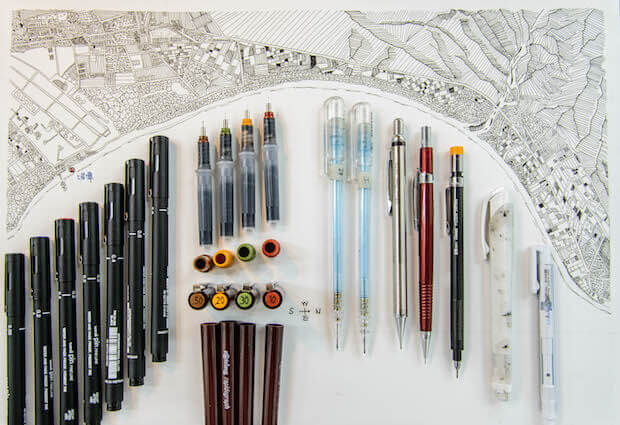
Utilizing a map, whether in its physical or digital form, can prove advantageous when searching for a new location or embarking on a road trip, particularly for older adults. However, it may be questioned why young children should learn to use and create maps, considering they do not drive. In this discussion, we will delve into the advantages of teaching young children how to create maps and provide suggestions on effective methods to facilitate their learning.
Why maps are an important tool for a child’s learning development
1. Learning about maps introduces spatial thinking
Learning about maps helps children begin to understand what is going on in the spaces around them. According to National Geographic, “Spatial thinking is one of the most important skills that students can develop as they learn geography, Earth, and environmental sciences.”
2. Reading maps improves visual literacy
According to learnnc.org, map skills contribute to the skill of reading images. This means that a student is comprehending an image, rather than just observing it.
3. Helps kids see past their own perspective
Learning about where different cities and countries are located will help children gain a larger world view than what they see in their daily lives. If they can look at a globe and realize that Canada is a large country surrounded by water, while Switzerland is much smaller and does not connect to any sea or ocean, kids will be able to gain a realization that geography affects how people live.
We’ve touched on this before in this article:
Why should kids learn geography, and how can you help them do so?
How to teach kids about maps while getting them to draw their own map
1. Show your kids different levels of detail on maps
There are maps that simply have an outline to display distance, while others have details of elevation, type of land, and population. Based on the age level you are working with, work your way up to a type of map that they can understand but still challenges them.
For example, younger children may only be able to focus on a black and white map with limited detail, but as they get older they will be able to comprehend multiple factors at once.
2. Measure distances on a map
An important part of making maps is determining accurate distances between places represented. For younger children, this may simply involve asking the question: what is closer to this house, and what is further away? Measuring does not need to involve actual units if students have not gotten there yet.
3. Explore directions and connect them to distance
An essential part of a map is having accurate directions. This is a great opportunity to teach children about North, South, East, and West. Once they understand the difference between each direction, combine it with what they know about distance to be able to correctly describe a location on the map.
Check out this article we’ve written on how to teach kids to navigate without GPS:
Teaching students how to navigate without a GPS
4. Understand what symbols mean
Another important piece of a map are the symbols representing objects or places on the map. Help students learn about what a picture can symbolize, and have them guess what different symbols on a particular map might mean. After they finish guessing, point out the map key to help them understand how to interpret the map.
5. Map out the classroom
Put all these skills together to make a map of the classroom or your house! First, have your children decide how detailed they want their map to be. Do they want to include every piece of furniture, or just the main items?
Next, assist them in figuring out the appropriate distances between items on the map. How big is the classroom? How far apart are the main items? Finally, have them create symbols and a map key to explain their map to others.
Once your students have mastered their maps of the classroom, turn it into a game. Using their maps, have them go on a treasure hunt! The more accurate their map is, the easier it will be.






